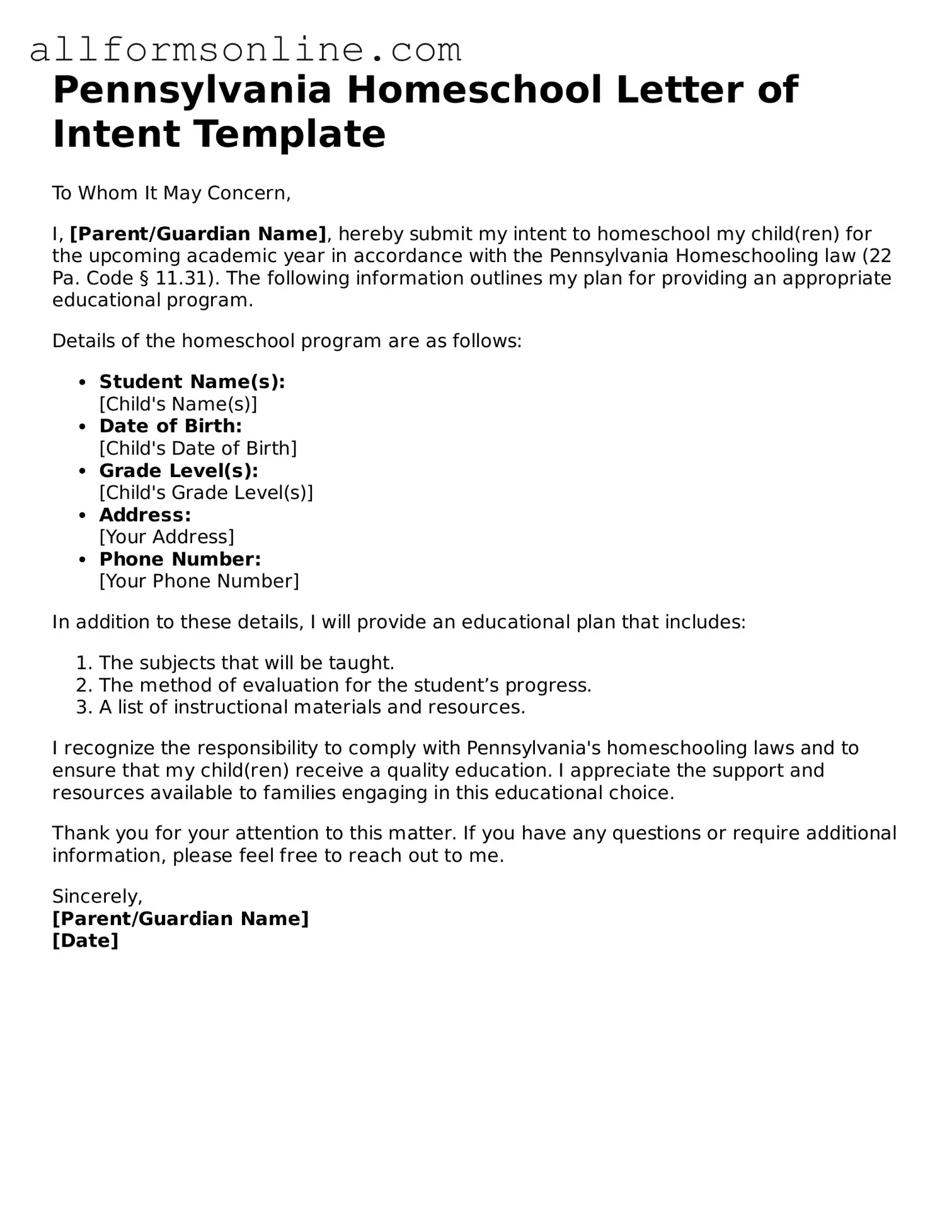Attorney-Approved Homeschool Letter of Intent Form for Pennsylvania
The Pennsylvania Homeschool Letter of Intent is a crucial document that parents must submit to formally notify their school district of their decision to homeschool their children. This form outlines the educational plan and ensures compliance with state regulations. Understanding its importance is the first step toward a successful homeschooling journey.
Ready to get started? Fill out the form by clicking the button below.
Fill Out Your Form Now
